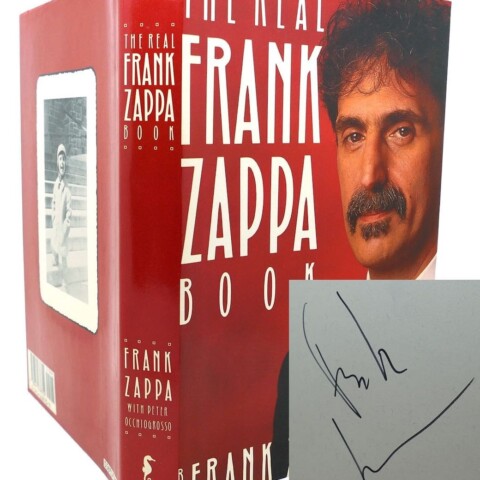In the latest instalment of This Week Across Time – an irregular column about musical events that happened exactly decades apart – Peter Kearns looks at a VERY IMPORTANT TIME for Bob Dylan and The Beatles.
 THE RACE WAS on in January’s second week of 1964 for the very first ever album release of Beatles music in the United States. In the first year alone, no fewer than five Beatles album incarnations all pretty much representing their British debut, Please Please Me, vied for punter dollars. All sold in their millions, some of them presumably to the same people. The only differences between them were one or two different titles here, a count-in wiped off ‘I Saw Her Standing There’ over there, false but superior-sounding American stereo fidelity, and the biggest photographic variety of cheesy young Beatle grins you could wish for.
THE RACE WAS on in January’s second week of 1964 for the very first ever album release of Beatles music in the United States. In the first year alone, no fewer than five Beatles album incarnations all pretty much representing their British debut, Please Please Me, vied for punter dollars. All sold in their millions, some of them presumably to the same people. The only differences between them were one or two different titles here, a count-in wiped off ‘I Saw Her Standing There’ over there, false but superior-sounding American stereo fidelity, and the biggest photographic variety of cheesy young Beatle grins you could wish for.
It wasn’t music being sold, that wasn’t really the focus yet. It was commodity. But that would soon be equalled by music, which throughout the ‘60s would take on an increasing social/political importance with everyone – except maybe for those bowler-hatted no-funners in 1969, power-walking past Savile Row’s Apple headquarters wishing to protect their sensitive ears from the Beatles’ rooftop concert polluting the air from above. But that’s another story we’ll get to in five years.

 Sure, pop music had already begun to gain in importance back in January ’54 when American DJ Alan Freed abbreviated the term ‘Rock and roll’ to ‘Rock ‘n’ roll’. So trivial, but I guess rocking and rolling was about as important as it got, whether or not the metaphor suggested riding boats, dancefloors or people.
Sure, pop music had already begun to gain in importance back in January ’54 when American DJ Alan Freed abbreviated the term ‘Rock and roll’ to ‘Rock ‘n’ roll’. So trivial, but I guess rocking and rolling was about as important as it got, whether or not the metaphor suggested riding boats, dancefloors or people.
But back to the grins. Canada had already beaten America to the punch with their carbon copy of the With The Beatles album, Beatlemania! With The Beatles, in November 1963. But now, stateside, the battle was between Vee-Jay Records and Capitol Records. After coming into financial strife in 1963, Vee-Jay had canceled that year’s initial release plan for an album titled Introducing… The Beatles, which would basically be the same as the British debut Please Please Me, minus the title song and ‘Ask Me Why’. But in December ’63 (a very special time), Capitol issued a press statement through Billboard magazine stating that their planned Beatles campaign would include an album, the first ever in the USA. Hearing this, Vee-Jay held a board meeting on January 7th, threw caution to the wind, and rush-released Introducing… The Beatles on January 10th. Not insignificant here was The Beatles’ first American album cover appearance, with its poorly chosen, unbalanced shot featuring Paul McCartney as Clutch Cargo ‘I’m-the-man’ cheddar, while the other three just looked grateful to be where they were.
 Within a week, Capitol Records served a restraining order on Vee-Jay, claiming US publishing ownership of two of the album’s songs, ‘Love Me Do’ and ‘PS: I Love You’. Capitol then followed with the release of their Meet The Beatles compilation culled from the first two British albums with additional B-side ‘This Boy’. No grins were present on this cover, Capitol having wisely used the now infamous unsmiling half-shadow Robert Freeman shot from the British With The Beatles album.
Within a week, Capitol Records served a restraining order on Vee-Jay, claiming US publishing ownership of two of the album’s songs, ‘Love Me Do’ and ‘PS: I Love You’. Capitol then followed with the release of their Meet The Beatles compilation culled from the first two British albums with additional B-side ‘This Boy’. No grins were present on this cover, Capitol having wisely used the now infamous unsmiling half-shadow Robert Freeman shot from the British With The Beatles album.
Vee-Jay responded by removing the two litigated songs from further pressings of Introducing… The Beatles, reinstating ‘Please Please Me’ and ‘Ask Me Why’ on the second edition in February. Not wanting to lag behind in the how-to-resell-the-same-old-product stakes, later in the year they repackaged the album yet again (not for a second but a third time) as Songs, Pictures And Stories Of The Fabulous Beatles (VJ 1092 for all you compleatists). Here the cover pictures really came into their own – cartoon headshots with Ringo in particular looking rather pleased with something going on out of shot, and Lennon on the back taking the role of Clutch this time. Of much interest was additional text listing the Beatles’ favourite music, colours, food and even taste in girls, stating Ringo as one who will send his steak back if it is not blood red. Paul was described as a nut, John Lennon as nearsighted and Ringo as short. The Beatles appealed to everyone and this revelatory information must’ve been quite a relief for marginalised Beatles album cover-reading short nearsighted nuts everywhere.
 This promotional technique of pointing out preferences as weakness for comedic entertainment was in stark contrast to our 21st century style of hamming everyone up even to the point of lying in order to sell a unit and make a buck. But 50 years ago when they made fun of someone in promotion, it was in jest and everyone got the joke. Plus that time being post-Presley’s pinnacle (arguably), post Marilyn Monroe, post-John Kennedy and leading to the beginnings of social upheaval, the air was probably a bit serious. I say probably because I wasn’t quite born yet. But a bit of lighthearted humour would’ve been a welcome respite and well in keeping with what The Beatles were all about at that early stage.
This promotional technique of pointing out preferences as weakness for comedic entertainment was in stark contrast to our 21st century style of hamming everyone up even to the point of lying in order to sell a unit and make a buck. But 50 years ago when they made fun of someone in promotion, it was in jest and everyone got the joke. Plus that time being post-Presley’s pinnacle (arguably), post Marilyn Monroe, post-John Kennedy and leading to the beginnings of social upheaval, the air was probably a bit serious. I say probably because I wasn’t quite born yet. But a bit of lighthearted humour would’ve been a welcome respite and well in keeping with what The Beatles were all about at that early stage.
For those young music fans that needed more substance, there was Bob Dylan. His The Times They Are A-Changin’ album issued on January 13th through Columbia Records, was described years later as his earlier political protest epic ‘Masters Of War’ stretched out to a whole concept album. Those consumers had no need for cartoons and jokes. For them it was enough for Dylan’s circumspect expression to grace that grey uninviting album cover – one whose innards reflected the Cold War frustrations of a population, making them feel that someone understood, even if they didn’t know they needed someone to before Bob came along. But even Dylan would then steer away from that. What times were changing to, I doubt it really mattered as long as the album covers got better. PETER KEARNS















